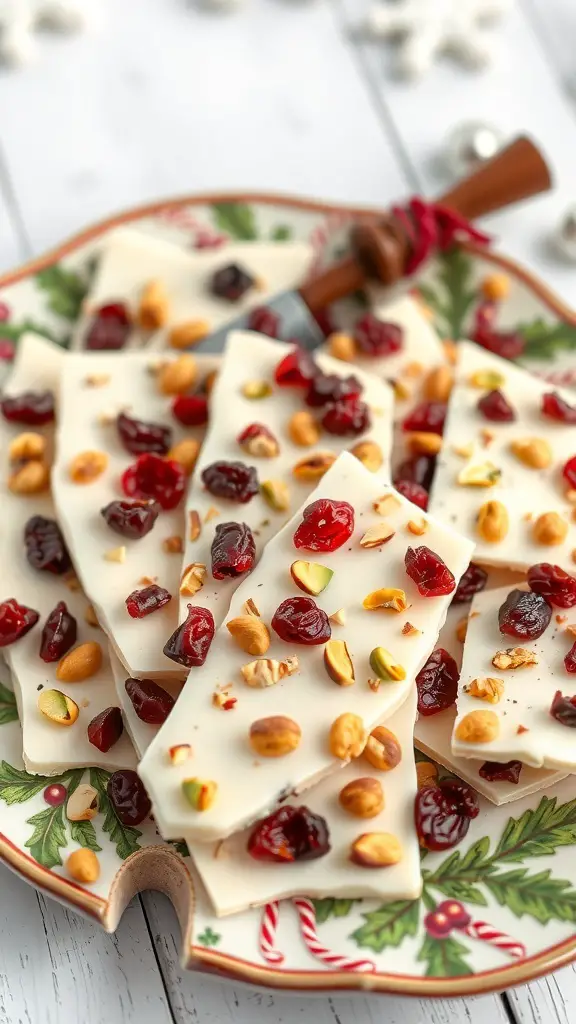Lemon Loaf Cake Recipe

There’s something about the smell of fresh lemon that instantly brightens a room and lifts your mood. I still remember the first time I baked this lemon loaf cake for a casual Sunday brunch at home. I was aiming for something simple, light, and zesty, but what came out of the oven was far more than just a cake—it was a golden, fragrant little masterpiece that had everyone hovering around the kitchen, sneaking slices before I even set it on the table.
It quickly became my go-to recipe whenever I needed something cheerful, easy, and, honestly, a little indulgent without being too heavy. The beauty of this loaf cake is that it’s simple enough for a weekday treat, yet impressive enough to serve when guests drop by unexpectedly. There’s no need for complicated icing or fancy decorations; the lemon glaze is enough to give it that shine and tang that makes people go, “Wow, this tastes amazing.”
Baking has always been my quiet little therapy. Mixing batter, zesting lemons, waiting for that smell to fill the house—it’s a ritual that always brings comfort. And this lemon loaf cake is one of those recipes where the end result is more than the sum of its ingredients.
Why I Love This Recipe
What makes this lemon loaf cake so special is the perfect balance between sweet and tangy. I’ve tried countless lemon cakes over the years, and what always frustrated me was the tendency for some to be overly dense or, worse, dry. This recipe strikes that delicate balance: the crumb is soft, tender, and moist, while the lemon flavor pops without being overpowering.
I love that it doesn’t require any fancy equipment. A simple loaf pan, a bowl, and a whisk are all you need to create a cake that looks like it belongs in a bakery display. The lemon glaze drizzled over the top adds a bright, shiny finish that makes slicing into it feel special.
It’s versatile, too. I’ve served this as a breakfast treat, a mid-afternoon snack with tea, and even as a light dessert after dinner. It’s exactly the kind of recipe that becomes a staple because it’s reliable, flavorful, and universally loved. Every time I bake it, I get that little flutter of excitement as I slice through the golden crust to reveal the soft, fragrant inside.
Ingredients for Lemon Loaf Cake
When it comes to this recipe, I like to use fresh, high-quality ingredients because they really make a difference. You’ll need the basics: flour, sugar, eggs, butter, and baking powder—but the star of the show is definitely the lemon. Freshly squeezed lemon juice and finely grated lemon zest bring a brightness that store-bought extracts simply can’t match.
I also add a touch of vanilla extract to round out the flavors. The eggs provide structure and richness, while the butter keeps the cake tender and moist. For those who enjoy a slight crunch, a pinch of coarse sugar sprinkled on top before baking gives a little texture and sparkle.
For the glaze, a mix of powdered sugar and lemon juice is all it takes. It’s simple, but when poured over the warm cake, it seeps into the crumbs and creates that iconic shiny finish that makes people’s eyes light up. I’ve found that skipping this step leaves the cake tasting good, but adding it elevates it to something memorable.
How Much Time Will You Need
One of the reasons I love this recipe is how straightforward it is. You can expect to spend about 15–20 minutes prepping the batter. Baking will take around 45–50 minutes, depending on your oven, plus about 10 minutes to let it cool slightly before adding the glaze.
So in total, you’re looking at roughly an hour and a half from start to finish. The process is relaxed—you don’t have to rush, and there’s plenty of time to clean up the kitchen or enjoy a cup of tea while the oven works its magic. It’s the perfect recipe for a leisurely weekend morning or a midweek treat when you need a little pick-me-up.
How to Make Lemon Loaf Cake

Step – 1: Preheat your oven to 350°F (175°C). Grease a standard loaf pan with butter or line it with parchment paper to ensure your cake doesn’t stick.
Step – 2: In a medium bowl, whisk together the flour, baking powder, and a pinch of salt. This helps ensure even distribution of the rising agent so your loaf bakes evenly.
Step – 3: In a separate large bowl, beat the butter and sugar together until light and fluffy. I like to use an electric mixer for this part because it really aerates the butter, but a sturdy whisk works just fine if you prefer.
Step – 4: Add the eggs, one at a time, beating well after each addition. Then mix in the vanilla extract. This combination gives the cake richness and a subtle depth of flavor that complements the lemon perfectly.
Step – 5: Stir in the lemon zest and fresh lemon juice. I find that using both zest and juice really intensifies the lemon flavor without making the cake soggy.
Step – 6: Gradually fold in the flour mixture until just combined. Avoid overmixing; you want the batter smooth, but overworking it can make the loaf dense.
Step – 7: Pour the batter into your prepared loaf pan and smooth the top with a spatula. If you like a little crunch, sprinkle some coarse sugar on top for that golden finish.
Step – 8: Bake for 45–50 minutes, or until a toothpick inserted in the center comes out clean. Your kitchen will start smelling incredible by this point.
Step – 9: While the cake is still slightly warm, prepare the glaze by mixing powdered sugar with enough lemon juice to create a pourable consistency. Drizzle it over the loaf and let it seep in.
Step – 10: Allow the cake to cool completely before slicing. This helps the glaze set and makes it easier to cut neat slices.
Substitutions
One of the joys of this lemon loaf cake is how adaptable it is. If you prefer a lighter flavor, you can replace half of the butter with unsweetened applesauce to keep it moist without adding extra fat.
For a slightly different twist, try using almond flour for part of the flour—it adds a subtle nutty depth. If you’re avoiding refined sugar, a natural sweetener like honey or maple syrup can work, though you may need to adjust the liquid in the recipe slightly to maintain the right consistency.
Even the glaze can be swapped. I’ve experimented with a thin yogurt glaze or a honey-lemon drizzle for a slightly tangier, less sweet finish. Each variation brings something new, making this recipe one that can evolve with your mood or occasion.
Best Side Dishes for Lemon Loaf Cake
While this cake is delicious on its own, pairing it with the right side dishes takes the experience to the next level:
- A dollop of freshly whipped cream or mascarpone adds richness and complements the lemon flavor beautifully.
- Fresh berries like blueberries or raspberries provide a burst of tartness and color.
- A hot cup of Earl Grey or green tea balances the sweetness and creates a comforting afternoon treat.
Serving and Presentation Tips
There’s something so satisfying about the moment you slice into a warm, golden lemon loaf. Presentation doesn’t have to be complicated to make an impression. I like to serve this cake on a simple wooden board or a white ceramic platter, letting the vibrant lemon glaze do most of the work visually.
For a little extra touch, you can sprinkle finely grated lemon zest over the top or add a few fresh berries around the base for color and contrast. If you’re serving it for breakfast or brunch, pairing a slice with a small ramekin of whipped cream or a drizzle of honey makes the moment feel indulgent without being over the top.
Another tip is to slice the cake slightly thicker than you think you need. Thicker slices hold the glaze better and give that perfect balance of tender crumb and bright citrus flavor in every bite.
Tips and Tricks to Make This Recipe Even Better

Even a simple lemon loaf can benefit from a few little tricks I’ve learned over the years:
- Always use fresh lemons. Bottled juice or dried zest just won’t give the same vibrant flavor. The natural oils in the zest really make a difference.
- Don’t overmix the batter after adding the flour. Overmixing can lead to a dense loaf instead of a tender, soft crumb.
- Let the butter and eggs come to room temperature before mixing. This helps the batter come together more smoothly and ensures a consistent texture.
- Use parchment paper in your loaf pan for easy removal and cleaner slices. It also helps prevent the crust from browning too much.
Small adjustments like these elevate the cake from “good” to “absolutely memorable.”
Common Mistakes to Avoid
Even experienced bakers can slip up when making a lemon loaf, so here are a few things to watch out for:
- Overbaking: This is the most common mistake. Keep an eye on the cake and use a toothpick to test doneness. If it comes out clean or with a few moist crumbs, it’s perfect.
- Too much glaze too early: Pouring glaze over a hot loaf can make it soggy. Wait until it’s slightly cooled so it absorbs without turning the cake mushy.
- Using dull zest: Avoid removing the white pith of the lemon when zesting; it’s bitter and can overpower the delicate flavor.
- Skipping room temperature ingredients: Cold eggs or butter can cause the batter to curdle and affect texture.
How to Store It
Lemon loaf cake keeps beautifully, but storing it correctly is key:
- Store at room temperature in an airtight container for up to three days.
- For longer storage, wrap the cooled cake tightly in plastic wrap and foil, and keep it in the refrigerator for up to a week.
- You can also freeze slices individually in airtight bags for up to three months. Thaw at room temperature or warm slightly in the oven before serving.
Proper storage ensures each slice tastes just as fresh as the first one you pulled from the oven.
FAQ
Can I make this lemon loaf gluten-free?
Yes! Substitute all-purpose flour with a gluten-free flour blend, ideally one with xanthan gum included to help with structure. The texture will be slightly different but still delicious.
Can I use lemon extract instead of fresh lemons?
You can, but I highly recommend using fresh lemons for the best flavor. Lemon extract is more concentrated and can taste artificial if overused.
Can I make this cake dairy-free?
Yes, substitute butter with plant-based butter or coconut oil. Make sure to use a dairy-free milk if your recipe includes any milk.
Can I add poppy seeds or blueberries?
Absolutely! About one tablespoon of poppy seeds or half a cup of fresh blueberries folded into the batter can add a nice texture and flavor variation.
How long does the glaze last?
The glaze is best when fresh but will stay shiny for 1–2 days at room temperature. Stored in the refrigerator, it can last up to a week, though it may become slightly less glossy.

Lemon Loaf Cake Recipe
- Total Time: 1 hour 5 minutes
- Yield: 8–10 1x
- Diet: Vegetarian
Description
Bright, tangy, and irresistibly moist, this lemon loaf cake is perfect for brunch, dessert, or a mid-afternoon treat. The tender crumb, buttery texture, and zesty lemon glaze make it a crowd favorite that’s simple to prepare yet impressive to serve. Whether you’re a seasoned baker or trying it for the first time, this recipe delivers consistent, delicious results every time.
Ingredients
- 1½ cups all-purpose flour
- 1 tsp baking powder
- Pinch of salt
- ½ cup unsalted butter, softened
- 1 cup granulated sugar
- 2 large eggs, room temperature
- 1 tsp vanilla extract
- Zest of 2 lemons
- ¼ cup fresh lemon juice
- ½ cup milk (or dairy-free alternative)
- 1 cup powdered sugar (for glaze)
- 2–3 tbsp fresh lemon juice (for glaze)
Instructions
- Preheat oven to 350°F (175°C) and grease or line a loaf pan.
- In a medium bowl, whisk flour, baking powder, and salt.
- Beat butter and sugar until light and fluffy.
- Add eggs one at a time, then mix in vanilla, lemon zest, and lemon juice.
- Gradually fold in flour mixture, being careful not to overmix.
- Pour batter into prepared pan, smooth the top, and sprinkle coarse sugar if desired.
- Bake for 45–50 minutes or until a toothpick comes out clean.
- Mix powdered sugar with lemon juice for glaze and drizzle over slightly cooled loaf.
- Allow to cool completely before slicing.
Notes
- Use fresh lemons for the brightest flavor.
- Let ingredients come to room temperature for better texture.
- Parchment paper ensures easy removal and clean slices.
- Optional: Add poppy seeds or fresh berries for variety.
- Prep Time: 15 minutes
- Cook Time: 50 minutes
- Category: Dessert / Snack
- Method: Baking
- Cuisine: American
Nutrition
- Serving Size: 8–10
- Calories: 250
- Sugar: 28g
- Sodium: 120mg
- Fat: 12g
- Saturated Fat: 7g
- Unsaturated Fat: 5g
- Trans Fat: 0g
- Carbohydrates: 35g
- Fiber: 1g
- Protein: 3g
- Cholesterol: 60mg







